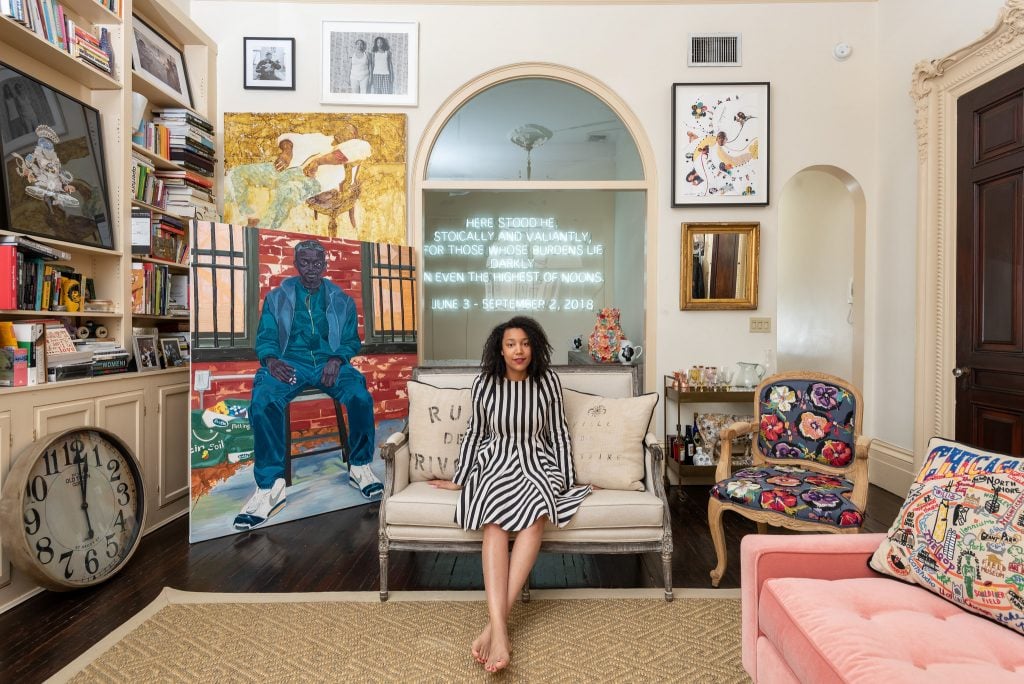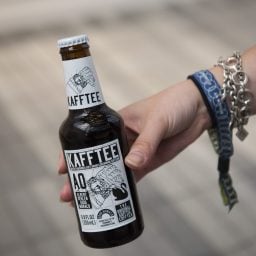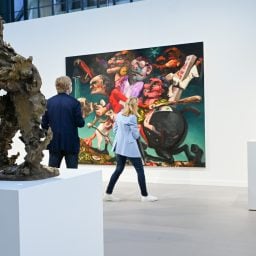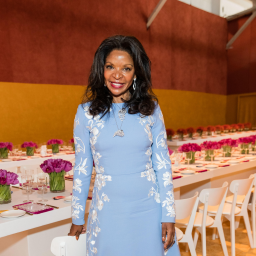Victoria Rogers collects art with purpose. “I support Black artists with a commitment to showing us the world as it could be,” she said.
The former director of arts at Kickstarter, Rogers is now the co-chair of the Brooklyn Museum’s Diversity, Equity, Inclusion, and Access committee and also of the Black Trustee Alliance (BTA) for Art Museums, a nonprofit that she co-founded in 2020 to increase the inclusion of Black perspectives in the art world—all while studying for an MFA in industrial and civic service design at Parsons.
This week is a particularly busy one for the New Yorker: She is defending her thesis—“It’s about dreams and unequal access to dream spaces,” both in terms of sleep and aspirations, she said—not to mention, she is graduating.
Meanwhile, BTA members are flying in from around the country for their first IRL convening during Frieze New York (May 18–22), which is celebrating its 10-year anniversary by collaborating on programming with local nonprofits that have supported emerging Black, female, and LGBTQ+ artists over the past 50 years.
Rogers found time in her schedule to speak with Artnet News about her plans for Frieze Week, her approach to buying art, and some of the artists she admires.
On what brings her to this year’s fair:
“For me, what’s most exciting is that I’m getting to go with members of the Black Trustee Alliance for Art Museums. Our second annual convening is timed to coincide with the fair. This broad swath of folks is coming from across the country because we all have this shared love of art and a passion for supporting inclusion. We haven’t had an in-person convening before—this is the inaugural one. It’s a big deal for us to be able to actually gather in physical space.”

The Shed, host of Frieze New York. Photo: Brett Beyer.
On Frieze New York’s new location:
“I still associate the fair with the boldness of being at Randall’s Island. I loved the romance of going there; I guess I’m the only person in the world who did. [Laughs.]
“I’m looking forward to seeing the fair settled into its new home at the Shed. The space wasn’t at the center of my thinking [when Frieze reopened there last year]; I think it kind of fell away in terms of importance because it was more about, what does resilience look like, and how do we show up for the cultural field?”
On her approach to collecting:
“I believe that artists’ voices play a meaningful role in shaping our society, and so I don’t collect based on style, medium, or size—I instead try to support artists who engage with social or cultural issues that resonate with me. Creative Time [the New York public arts non-profit, where Rogers does strategic planning as an executive committee member] has shaped my thinking in this way.”
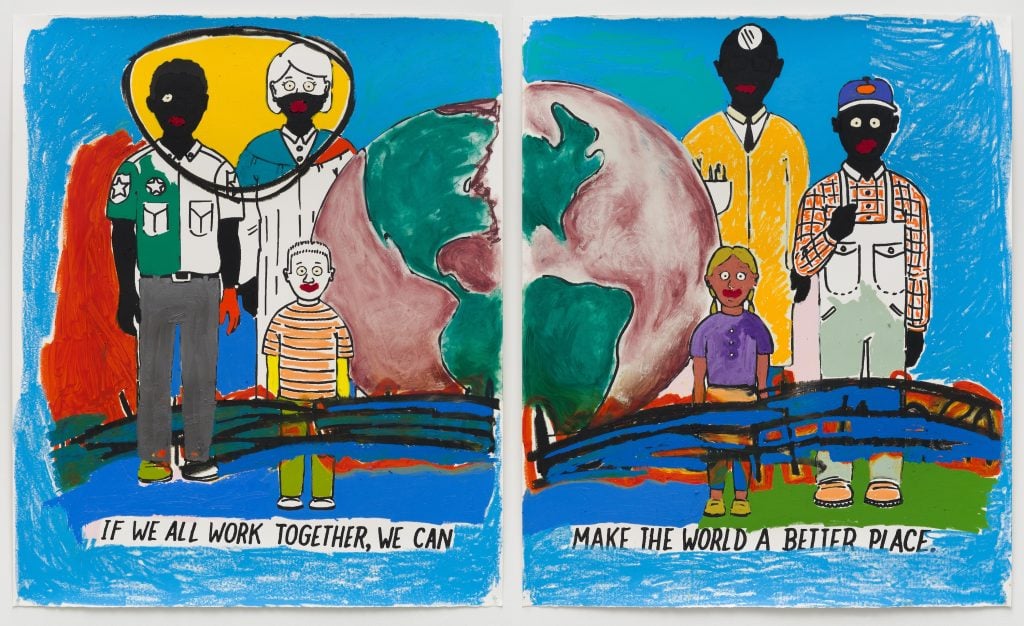
Sable Elyse Smith, Coloring Book Painting 83, 2022. Photo by Charles Benton. Courtesy of the artist and JTT, New York.
On looking beyond the booth:
“I am passionate about collecting works by artists of color; I’m also passionate about how representation looks beyond which artists are shown within an art-fair booth. Which galleries have diversity in their leadership teams? The reality is: very few. What does the [fair’s] leadership team look like? What companies does [it] do business with? We need to think beyond the scope of which artists are being shown, though of course that is important, too.”
On why she doesn’t buy art at fairs:
“If I’m making an investment, I’d like to really know what that artist is up to, what their values are. I find it easiest to do that research independently, and I enjoy it. You know, I was an art history major; I think it’s fun.
“I do studio visits. I do a lot of Instagram, especially in the past couple of years—seeing who’s following whom, and learning about people that way, and expanding my knowledge base. I love residency programs—the Studio Museum in Harlem has an amazing one that I follow pretty closely. And then to be able to learn from the broader diversity of cultural institutions, from the Brooklyn Museum to the Whitney Biennial—that’s been a really valuable experience.
“I view something like Frieze as another opportunity to learn about new artists. And then I do my own research from there, once I’ve uncovered who I’m curious about.”
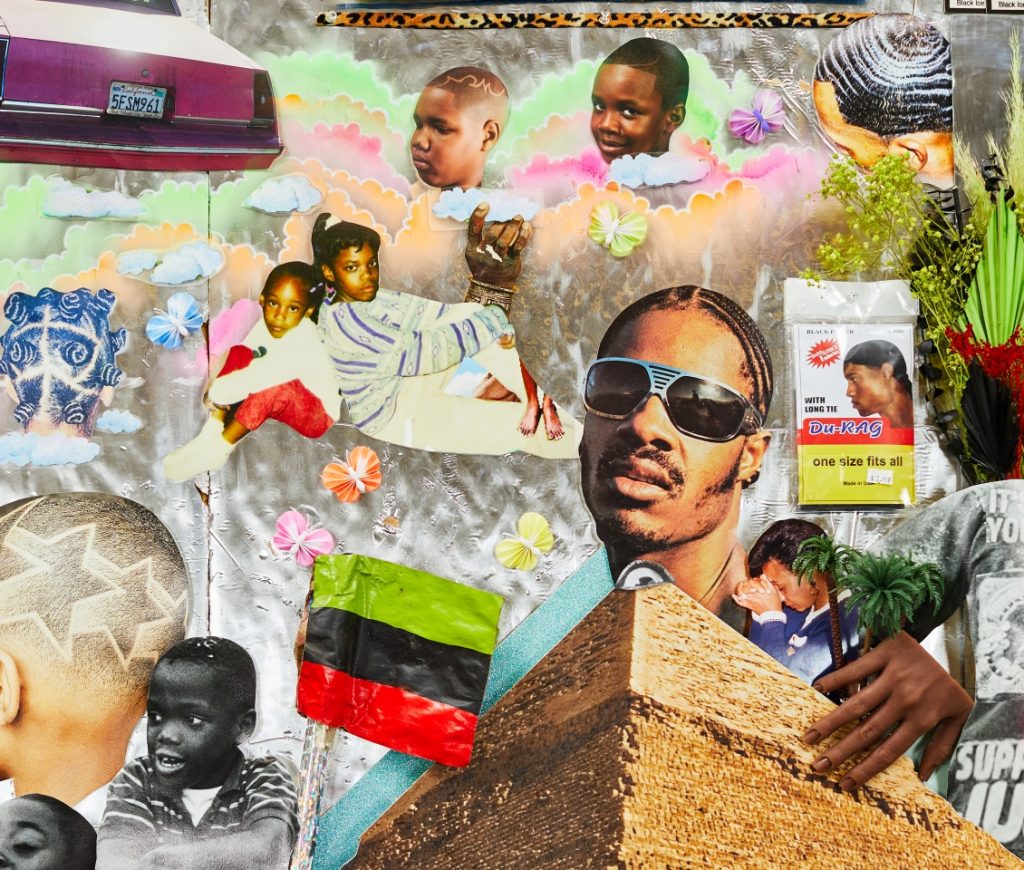
Lauren Halsey, thou shall not fold (detail), 2022. Courtesy of the artist and David Kordansky Gallery.
On artists she admires:
“Hank Willis Thomas is someone that I really respect, who everyone knows is into social issues. [Goodman Gallery is presenting work from the artist at Frieze New York.]
“I’ve enjoyed learning more about Los Angeles through Lauren Halsey’s eyes. I don’t know how many meals she packed with the team that she was leading, but they made an amazing effort to ensure that food got out to as many people as possible during this moment. For me, it’s clear that her investment is in community, and I’ve been really impressed by her ability to shape responses to need. So I love her work.
“Another person who comes to mind is [the sculptor] Hugh Hayden. He’s at the nexus of this partnership among Lisson Gallery, Clearing Gallery, and Columbia University, working on an initiative, like a scholarship, to help cultural producers who might not have the resources to go to a place like Columbia. He got his MFA there [in 2018]; he is giving back already.
“I recently bought a work by Jessica Vaughn [who works with discarded and mass-produced materials] as well as Sable Elyse Smith, who’s done a lot reflecting on the carceral system. Being able to support people who are reflecting back on our society in its current shape, and also imagining how it could be, is something that I care a lot about from the collector standpoint.”
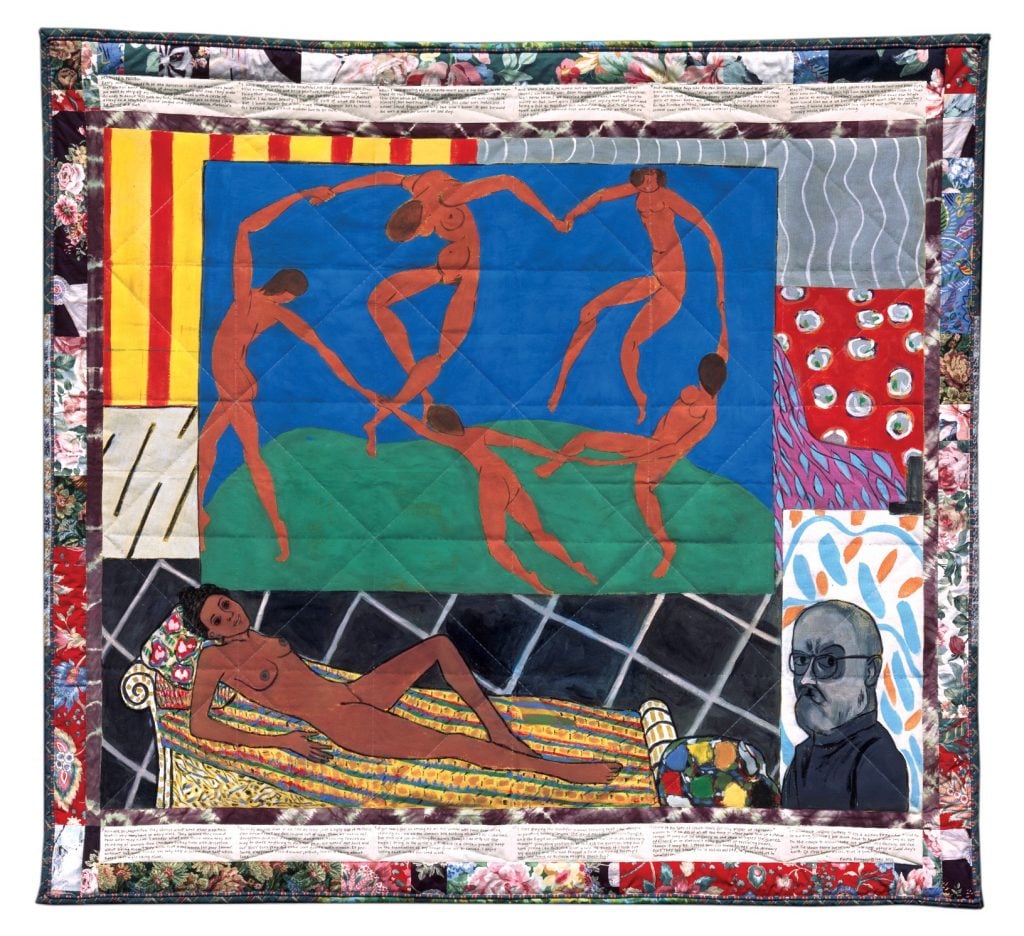
Faith Ringgold, Matisse’s Model: The French Collection Part I, #5, 1991. © Faith Ringgold / ARS, NY and DACS, London, courtesy ACA Galleries, New York 2022.
On shows she’s seeing around the city:
“Lauren Halsey’s first New York exhibition at David Kordansky gallery (until June 11, 2022); Tavares Strachan’s performance and installation, ‘The Awakening,’ at Marian Goodman Gallery (through June 11, 2022); and Miles Greenberg’s upcoming durational performance [on May 22, 2022] at Worthless Studios are all on my radar.
“I’m also eager to see ‘Faith Ringgold: American People‘ at the New Museum (until June 5, 2022): I have been waiting to see the show as part of the Black Trustee Alliance programming. And I’m looking forward to Duke Riley’s ‘Death to the Living, Long Live Trash‘ (June 17, 2022–April 23, 2023) and ‘Virgil Abloh: ‘Figures of Speech’‘ (July 1, 2022–January 29, 2023) at the Brooklyn Museum this summer.”
